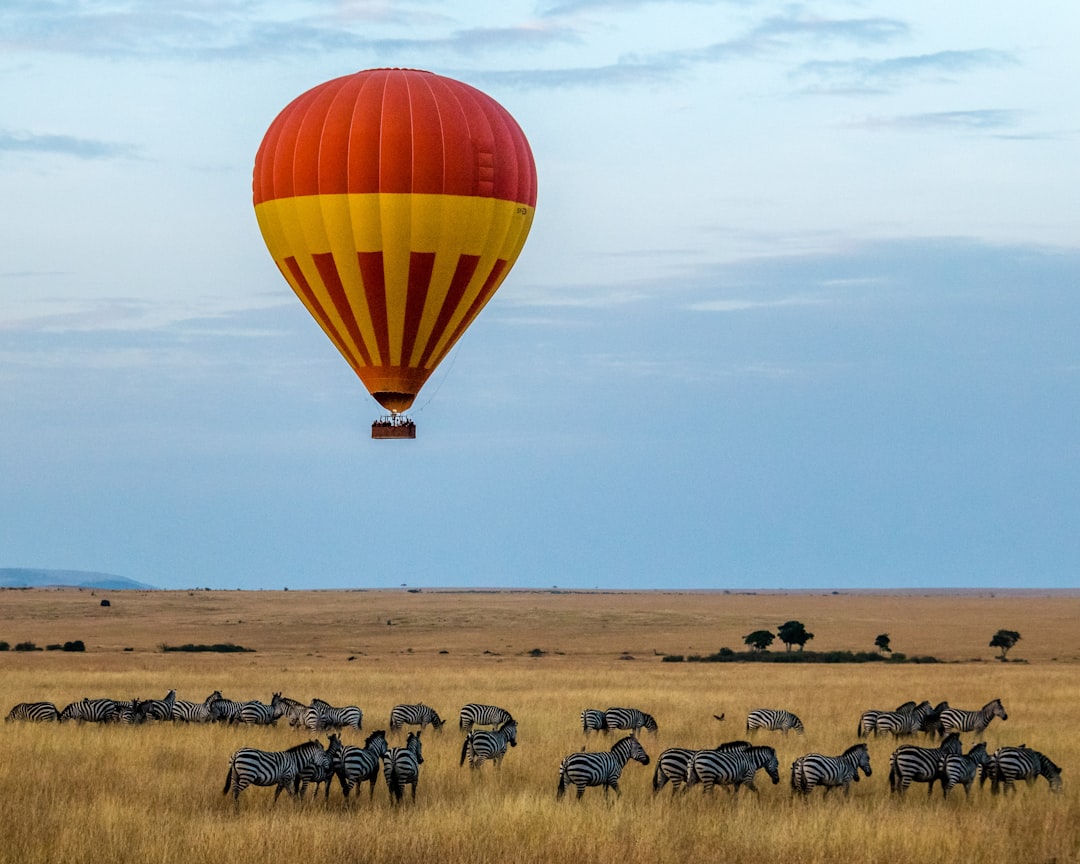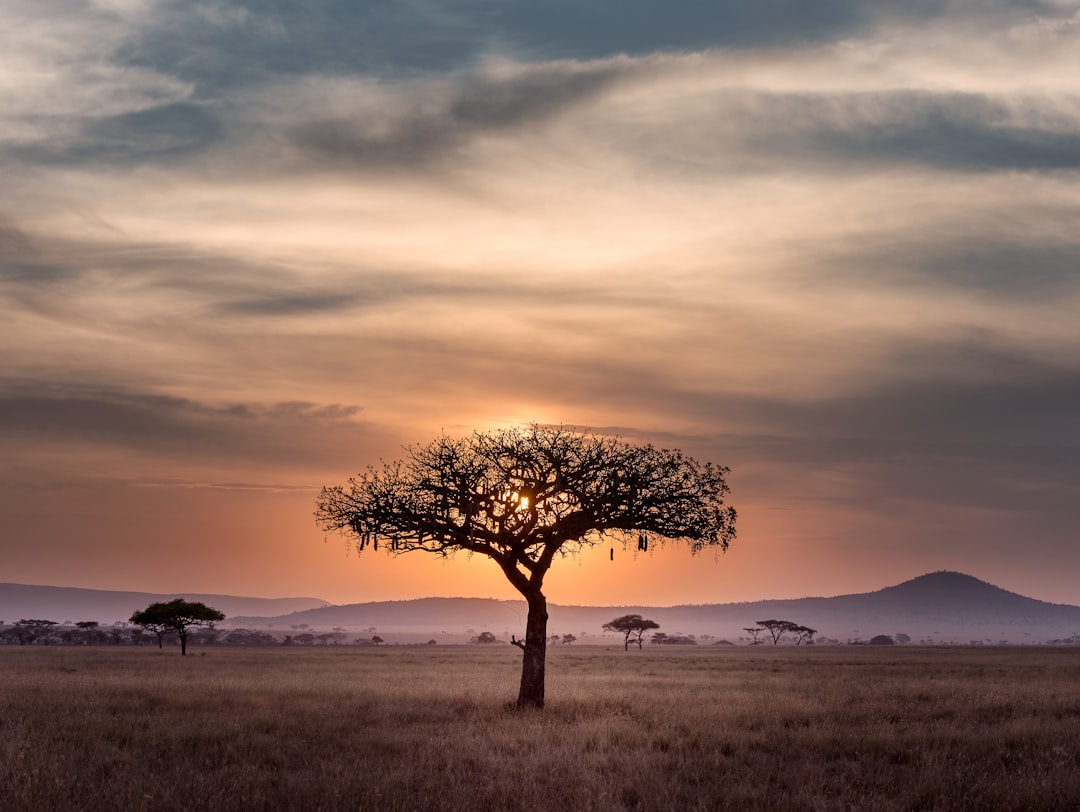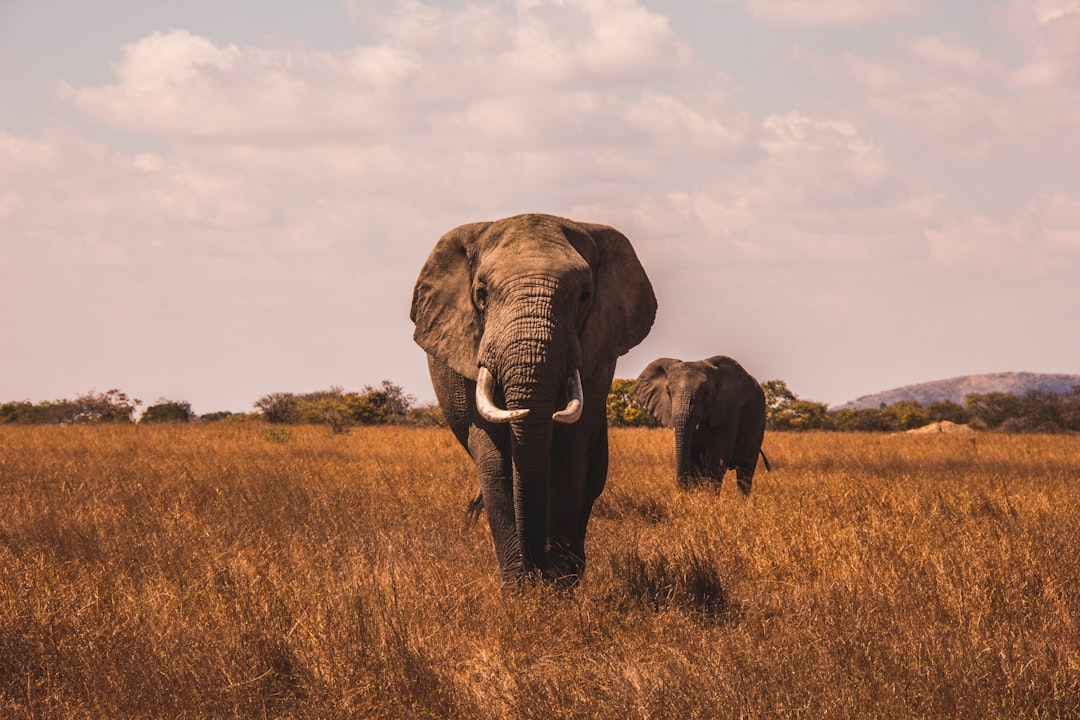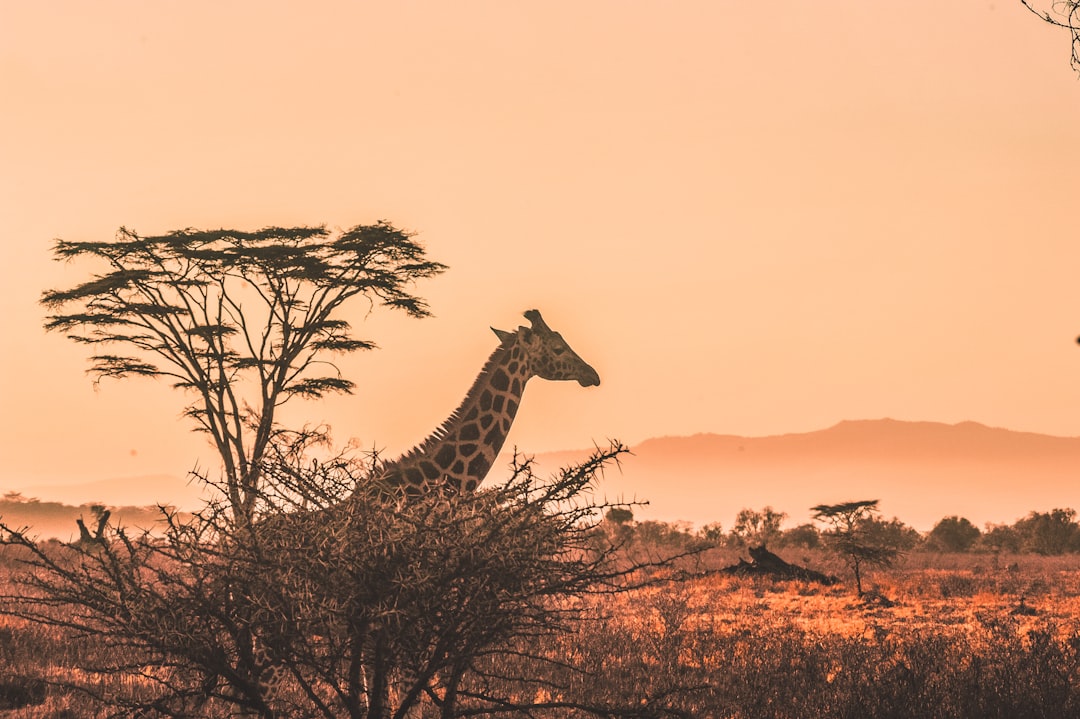An Insider’s Guide: 14 Essential Tips for Your First Trip to Kenya
An Insider's Guide: 14 Essential Tips for Your First Trip to Kenya - Packing List: What to Bring for a Kenyan Safari

Packing for an African safari requires some thoughtful preparation. While game drives and wildlife spotting are the highlights, you'll also need to dress practically for long days outdoors as well as evenings at your lodge or camp. The good news is that most safari destinations don't require formal attire, but you'll still want versatile pieces that transition well from daytime adventures to relaxed dinners.
Start with neutral-colored lightweight pants, shorts, shirts, and dresses that you can mix and match. Tan, olive green, and khaki colors blend in with the landscape. Quick-dry synthetic fabrics are ideal, avoiding cotton which stays damp longer. For game drives, stash a packable rain jacket since African storms can come on quickly. Hats, sunglasses, and sunscreen are musts in the intense equatorial sun.
Footwear is key. Pack both closed walking shoes or hiking boots along with sandals. During game drives, closed shoes protect your feet from bites or scratches if you need to get out of the vehicle. However, most safari camps and lodges have rough terrain, so sandals work well when walking around.
Bring binoculars to zoom in on wildlife and a high zoom camera with extra batteries and memory cards. Pack a headlamp or small flashlight for navigating lodges at night. Though many camps provide loaner guides, bringing your own gives flexibility.
While game drives take up long days, you'll still want casual yet smart clothes for evenings. Light dresses or skirts, trousers, casual button-downs or polos work well. Scarves or pashminas come in handy during chilly morning and evening hours. A light sweater or fleece offers warmth during any cool weather.
Don't forget swimsuit if your camp or lodge has a pool. Because safaris mean lots of time outdoors, also pack insect repellent, sunscreen, aloe vera, and any essential medications. Most camps provide basic toiletries but if you require specific brands, pack your own.
Finally, protect your belongings. Bring a daypack for carrying essentials during activities. Consider packing camera gear, money, passports and other valuables in a safe disguised bag. Portable safes that lock inside suitcases also help secure items. Though camps have safes, in-room storage usually remains accessible.
What else is in this post?
- An Insider's Guide: 14 Essential Tips for Your First Trip to Kenya - Packing List: What to Bring for a Kenyan Safari
- An Insider's Guide: 14 Essential Tips for Your First Trip to Kenya - Booking Your Flight: When to Visit and Fly Direct or Connect?
- An Insider's Guide: 14 Essential Tips for Your First Trip to Kenya - Choosing Where to Go: Popular Destinations and Parks
- An Insider's Guide: 14 Essential Tips for Your First Trip to Kenya - Picking Your Accommodation: Camp, Lodge or Luxury Resort?
- An Insider's Guide: 14 Essential Tips for Your First Trip to Kenya - Making a Game Drive Itinerary: Animals to See and Where
- An Insider's Guide: 14 Essential Tips for Your First Trip to Kenya - Staying Safe: Health, Security and Travel Tips
- An Insider's Guide: 14 Essential Tips for Your First Trip to Kenya - Experiencing the Culture Through Food and People
- An Insider's Guide: 14 Essential Tips for Your First Trip to Kenya - Extending Your Adventure: Side Trips in East Africa
An Insider's Guide: 14 Essential Tips for Your First Trip to Kenya - Booking Your Flight: When to Visit and Fly Direct or Connect?

Planning a Kenyan safari adventure starts with booking your flights at the optimal time for wildlife viewing while scoring deals on airfare. The best game viewing happens during the annual Great Migration from July through October when millions of wildebeest, zebras and antelope travel between Kenya and Tanzania. You’ll also spot ample wildlife year-round in popular parks like Masai Mara. Planning when to visit and deciding whether to fly direct or connect depends on your budget, time and interests.
Peak season draws larger crowds and higher prices. For the best sightings without hordes of vehicles, travel during the shoulder seasons of January-February and November when animal sightings remain abundant with fewer tourists. Green season from March to May brings newborn animals, lush landscapes and lower rates before the rains intensify through June. Prices also dip from July to October in between kids’ school holidays.
Flying direct to Nairobi saves time but costs more. Search for deals out of major hubs like New York, Atlanta, London and Amsterdam direct to Nairobi. From the West Coast, your best bet is connecting through a hub. I usually fly from Los Angeles to Amsterdam or London on a deal under $800 round-trip in economy, then grab a separate ticket on KLM or British Airways to Nairobi for under $600. The extra stop tacks on hours but saves hundreds.
Securing the lowest fare takes persistent searching. I use Mighty Travels Premium alerts to pounce when mistake fares pop up, getting insane deals like LAX to Nairobi for $350 round-trip on KLM. Signing up for airline sale alerts also helps grab discounted economy or business class seats. Being flexible on dates expands options as does searching for nearby airports like JFK instead of LGA.
Despite what many experts claim, I’ve found flying with a U.S. or European carrier provides better service and fewer delays than flying on African carriers between hubs and Nairobi. However, precision planning is essential when self-connecting flights on separate tickets. Always allow ample layover time in case of delays. Purchase travel insurance to cover missed connections.
To maximize your time on safari, pick the most direct efficient routing even if it costs a bit more. While connecting through the Middle East saves money, the extra flights and jet lag cut into precious vacation days. Traveling over 20 hours each way, I try to fly direct if budget allows so I’m refreshed to start game drives immediately. Consider comfort too – layovers allow stretching your legs while direct long-hauls over 10 hours get tiring. Mix up airline choices going and returning to experience both premier and budget carriers.
An Insider's Guide: 14 Essential Tips for Your First Trip to Kenya - Choosing Where to Go: Popular Destinations and Parks

With Kenya spanning over 224,000 square miles, selecting where to focus your safari adventure can be overwhelming. The country boasts over 50 national parks, reserves and conservancies teeming with diverse wildlife. Determining the right destinations comes down to your interests, budget and timeframe.
For a first-timer on a one-week safari, the priority is seeing the iconic animals – elephants, lions, leopards, rhinos, buffalos and more. With limited time, pinpoint the most wildlife-rich parks. The Masai Mara National Reserve tops the list as the best place to spot big cats with its large prides of lions along with cheetahs and leopards. Herds of elephants, buffalo and zebra also roam the rolling grassland plains.
Adjacent to Masai Mara lies the Serengeti National Park, extending over the border into Tanzania. During the annual Great Migration from July through October, these two parks offer unparalleled sightings of millions of animals on the move. Even without the migration, Serengeti impresses with high densities of predators chasing after thriving herds of wildebeest, gazelles and more.
A lesser visited but wildlife-packed alternative is Tsavo East National Park. As Kenya's largest park, Tsavo East contains diverse terrains like open grasslands, wetlands and woodlands. Spot the Big Five plus large herds of buffalo and elephants. Tsavo offers budget-friendly camps and fewer crowds. However, the extra driving from Nairobi eats into tight schedules.
For a Big Five focused itinerary, combine two parks in a week. Spend 3 days in Masai Mara then 4 days at Lake Nakuru National Park or Amboseli National Park. Lake Nakuru wowes visitors with lions, hippos, flamingos and over 400 species of birds. Amboseli charms with views of Mount Kilimanjaro and some of Kenya's largest elephant herds, numbering over 1200.
On a longer 10-14 day safari, add more locations like the Laikipia Plateau, Mount Kenya National Park and Ol Pejeta Conservancy. Laikipia encompasses private conservancies offering specialized activities like camel trekking with Samburu people. Around Mount Kenya, spot unique wildlife in alpine forest and see melting glaciers atop Africa’s second highest peak. At Ol Pejeta, track endangered rhinos while spotting the Big Five.
When choosing destinations, think about activities beyond game drives to maximize adventure. Parks along the coastline like Watamu and Kisite-Mpunguti Marine National Parks offer snorkeling, diving, kayaking and dhow cruises. In the forests of Kakamega, hike through lush jungle terrain reminiscent of the Amazon. At Hell’s Gate National Park, cycle or rappel down red rock gorges.
An Insider's Guide: 14 Essential Tips for Your First Trip to Kenya - Picking Your Accommodation: Camp, Lodge or Luxury Resort?
Selecting where to stay on a Kenyan safari involves weighing preferences for comfort, activities, and budget. The three main options include safari camps, lodges, and luxury resorts. Each provides different experiences from spartan tents to lavish suites.
Many first-timers picture themselves sleeping in rugged canvas tents like the vintage safaris of Roosevelt and Hemingway. Modern permanent tented camps retain this adventurous vibe while including more comforts. Stays focus on bringing you close to nature through activities like bush walks while socializing with other guests at communal meals. Accommodations range from simple cots in basic dorm tents to elevated beds and flush toilets in deluxe tents. Budget around $200-$400 per night.
At the mid-range, safari lodges offer comfortable en suite rooms, typically with wifi, restaurants and pools. Look for small boutique lodges with just 5-15 rooms for a personalized feel. Activities still highlight wildlife viewing with ranger-led drives, bush breakfasts or sundowner cocktails in the bush. Many lodges stand adjacent to park gates, letting you maximize time on morning and evening game drives. Plan around $300-$600 per night.
On the luxury end, all-inclusive resorts provide pampering amenities like spas, private plunge pools, and personal butlers. Lavish suites showcase breathtaking nature views along with features like indoor and outdoor showers, fireplaces, and walk-in closets. Gourmet cuisine and premium bars impress. Resident astronomers provide stargazing sessions under the Milky Way galaxies. Stays run $600-$1,500+ per night.
Which option best suits your safari dreams? Tented camps win for offering an authentic connection to the bush with the excitement of hearing hyena whoops or lions roaring through the night. However, bugs and creatures can also make their way inside, so be prepared to rough it. If you seek more creature comforts, lodges allow returning from game drives to relax in your room. Luxury resorts work for travelers who want to combine safari adventure with indulgent amenities.
When choosing, also consider if you prefer properties inside or outside parks. Staying inside national park boundaries provides convenience, letting you maximize time on early morning and late afternoon game drives. Being so close to wildlife means no fences surround your accommodation. Outside park gates, properties tend to be larger with more amenities but require longer transfer times for drives. Exclusivity comes at a cost so lodges inside parks tend to be pricier.
An Insider's Guide: 14 Essential Tips for Your First Trip to Kenya - Making a Game Drive Itinerary: Animals to See and Where

The highlight of any Kenyan safari is undoubtedly the game drives, your chance to spot the country’s captivating wildlife up close. With over 25 national parks and dozens of conservancies, pinpointing the best places to see your most wanted animals makes trip planning more manageable.
First, determine your creature wishlist. For many first-timers, gazing upon the Big Five tops priorities – elephant, lion, leopard, rhino and buffalo. Tick off lions and leopards in the Masai Mara where big cats roam the open plains stalking gazelles and zebras. Elephants forage by the dozens in Amboseli National Park against the backdrop of Mount Kilimanjaro. Black rhinos make their home in Nairobi National Park, conveniently accessed from the capital. And Cape buffalo, with the largest herd sizes, can be found in abundance in nearly any Kenyan park.
To spy the Great Migration, time your visit between July and October. Millions of wildebeest, gazelles and zebras travel from Tanzania’s Serengeti into Kenya’s Masai Mara following the rains and grazing. Breathtaking river crossings see thousands of animals plunge into crocodile-infested waters. Throughout the migration, predators lie in wait to pick off weak prey, providing incredible photo ops. Outside of migration season, these iconic species still congregate in the Serengeti and Masai Mara year-round.
For outstanding birdwatching, head to the Great Rift Valley lakes. Flamingos turn Lake Nakuru pink by the hundreds of thousands. Lake Baringo attracts over 470 species including migratory birds traveling from Europe and Asia along the African–Eurasian flyway. On the coast, Tsavo East National Park presents diverse ecosystems perfect for spotting savanna birds like ostrich and secretary birds along with wetland species.
To catch a glimpse of the critically endangered black rhino, Lewa Wildlife Conservancy and Ol Pejeta Conservancy offer prime habitat protection. Thanks to dedicated conservation efforts, the 2021 rhino census found over 1600 black rhinos in Kenya, though they remain elusive. For even better odds, many conservancies now offer guided treks to track these rare giants armed with telemetry equipment.
Grevy’s zebras, dolphin sightings and heart-shaped red topi also rank as unique Kenyan wildlife experiences. The most endangered zebra species, Grevy’s zebras only live in Kenya and Ethiopia. Spot them in Samburu National Reserve. In the Indian Ocean, snorkel with dolphins off the coast of Watamu. And Lake Nakuru brims with thousands of topi displaying their signature heart-shaped backsides when seen from behind.
An Insider's Guide: 14 Essential Tips for Your First Trip to Kenya - Staying Safe: Health, Security and Travel Tips

While a Kenyan safari promises a thrilling adventure, you’ll want to take important precautions to stay healthy and safe. As a developing country, Kenya presents more risks than typical Western destinations. However, following key tips and using common sense goes a long way to ensure peace of mind.
Start with vaccinations. Kenya mandates yellow fever immunization with proof required upon arrival. Hepatitis A and typhoid vaccines also provide protection when drinking tap water and eating local foods. Malaria prevention involves taking prescription medication starting days before your trip through a week after. Some anti-malarials can cause side effects or sun sensitivity, so discuss options with your doctor. Adding DEET bug spray, lightweight long sleeves and pants, plus mosquito netting over beds protects from bites.
While safaris steer clear of crowded cities, petty crime still occurs at lodges and viewpoints. Leave valuables locked up and avoid flashy jewelry when out and about. Only carry needed cash in a secure hidden money belt under clothes. Back up photos and documents online in case cameras or devices get stolen. Avoid walking alone at night by using camp escorts. Arrange airport transfers through your lodging instead of taxis. Alert local authorities and your embassy if you experience any crime.
Road safety constantly requires vigilance. Only use reputable companies for park transfers in well-maintained jeeps with skilled drivers. Insist seat belts get used. Avoid overcrowded matatus mini-vans prone to accidents. At viewpoints, stay well back from cliff edges and don’t approach wildlife too closely. Always follow ranger instructions during hikes and activities. Limit driving at night due to pedestrians and animals on roads.
While political turmoil affects some African regions, most tourist areas remain stable. Monitor travel advisories and news for any issues. Border areas near Ethiopia, Somalia and South Sudan sometimes face isolated attacks so avoid travel there. If you hear about any local demonstrations, avoid going near them. Keep up with local and park alerts regarding poaching or bandit activities, steering clear. Travel in groups rather than alone.
Lastly, purchase comprehensive travel insurance covering medical evacuation. Many remote areas lack modern clinics, so evacuation to Nairobi or home may become necessary for serious illness or injury. Ensure your policy includes emergency medical transportation, trip cancellation, lost baggage and emergency assistance services.
An Insider's Guide: 14 Essential Tips for Your First Trip to Kenya - Experiencing the Culture Through Food and People
Rising from the lush green valleys and rolling hills of central Kenya, Mount Kenya's snow-capped peaks beckon intrepid climbers to ascend Africa’s second highest mountain at 17,057 feet. While Kilimanjaro may boast the continent’s loftiest summit, Mount Kenya offers a more technical climbing challenge that draws mountaineers from around the world. Its jagged ridges and glacier carved valleys demand skill and stamina to traverse safely. The rewards for those who do are views of Kenya in all her glory: the equatorial snows, Afro-alpine moorlands, montane forests, and distant savannas.
The ascent of Mount Kenya requires careful preparation and route selection based on your mountaineering experience. The popular direct routes to Pt. Lenana take 3-4 days and involve scrambling over boulders with some light climbing on the summit approach. More technical routes up the icy sheer cliffs of Batian and Nelion peaks should only be attempted if you have rock climbing and glacier travel skills. Most climbers fly into Nanyuki or Naro Moru for trailhead access. Porters can be hired to help carry your gear up but count on doing most of the work yourself.
Climbing through the ecological zones of Mount Kenya is visually stunning. The lower montane forest belt has dense stands of cedar and olive trees draped in old man’s beard. Further up, giant heather and lobelias dot the moorland as the vegetation becomes sparser. Above 13,000 feet is an Afro-alpine wonderland of glaciers, ice-fringed tarns, and endemic plants found nowhere else. Sitting atop a 16,000-foot rocky summit on Mount Kenya feels like being on top of the world. Looking out across the ice-carved Lewis Glacier and seeing nothing but sky is both exhilarating and humbling.
An Insider's Guide: 14 Essential Tips for Your First Trip to Kenya - Extending Your Adventure: Side Trips in East Africa
Of all of Kenya’s wildlife encounters, few compare to the joy of swimming with wild dolphins in their natural ocean habitat. Several locations along the Kenyan coast offer these extremely rare interactions with pods of spinner and bottlenose dolphins. Slipping into the warm Indian Ocean waters to frolic with these intelligent marine mammals creates lifelong memories.
At Watamu Marine National Park, experienced guides lead small groups of snorkelers offshore daily to find pods of dolphins. Luck plays a role but most outings encounter a curious pod. As the boat idles beside circling fins, you'll slip on your mask and fins with pounding heart. Entering the water, you'll be amazed as a few dolphins glide toward you to investigate the new visitors. With rapid clicks and squeaks, they signal each other while changing direction in unison. Their speed and agility is astounding up close. You'll surface grinning ear to ear after the friendly dolphins swim circles around you.
Down south, at Shimoni near Wasini Island, another remarkable opportunity exists for an even more personal experience. Here, local guides take small groups to meet a resident pod of bottlenose dolphins that freely approaches swimmers. After donning lifejackets, you'll slip into the sea as the bottlenose dolphins arrive like clockwork. With the pod cruising past, you can reach out and actually touch the dolphins if they initiate contact. Few things compare to caressing the silky smooth skin of a wild dolphin or watching one look into your mask with friendly curiosity. It's an intensely personal connection that elicits great awe for these social mammals.
Those spending time in Mombasa can also search for dolphins on dhow sailing tours of the reefs ringing Mombasa Marine National Park. Early morning or sunset cruises provide plenty of dolphin sightings around the coral formations as they chase fish. Spinner dolphins often race and leap beside the dhows while feeding. Since you stay onboard the boat, simply observing and photographing their natural behaviors, no permit is required.
For family-friendly guaranteed interactions, visiting a responsible dolphin education center like Dolphin Encounters in Diani Beach can be rewarding. Here, visitors learn about dolphin conservation while touching and feeding three resident Indian Ocean bottlenose dolphins. With a trainer's supervision, kids delight in getting wet with the dolphins in shallow waters right from shore. It provides enriching education about these special creatures we share the planet with.
